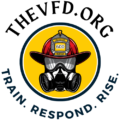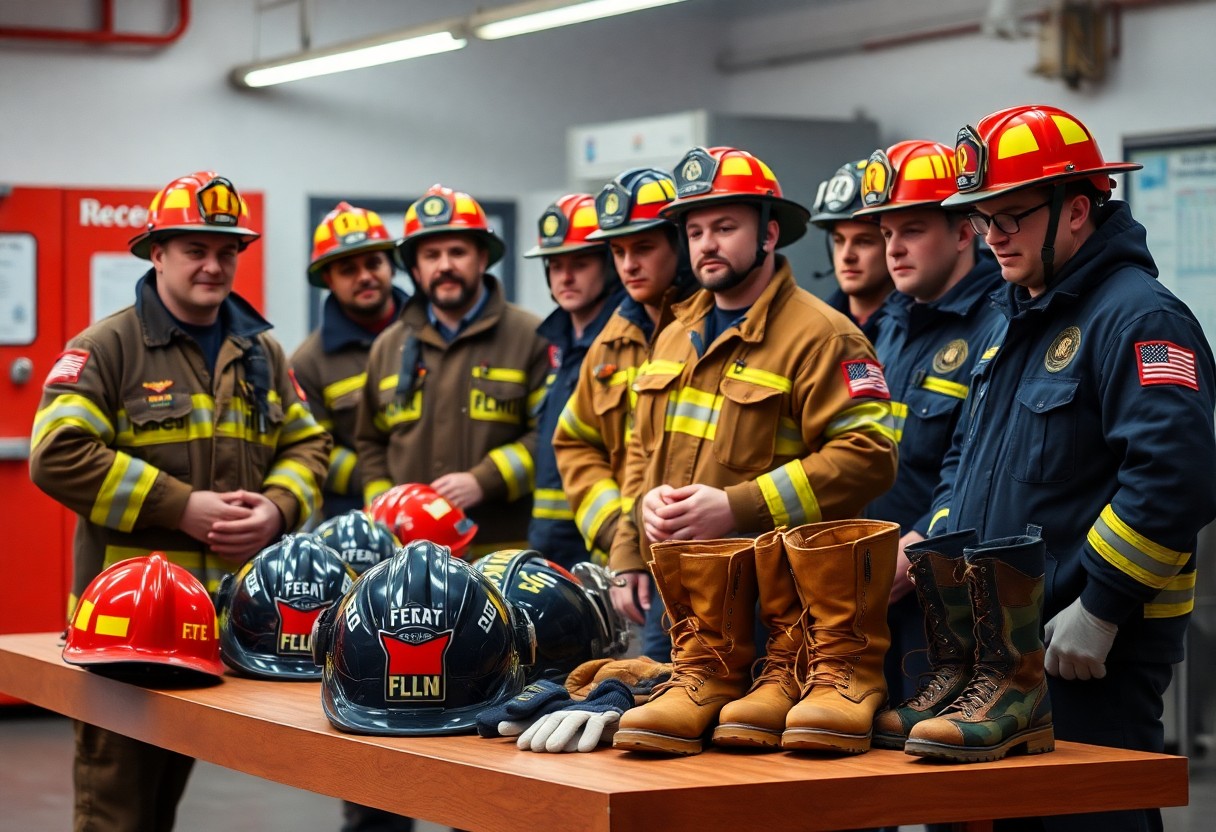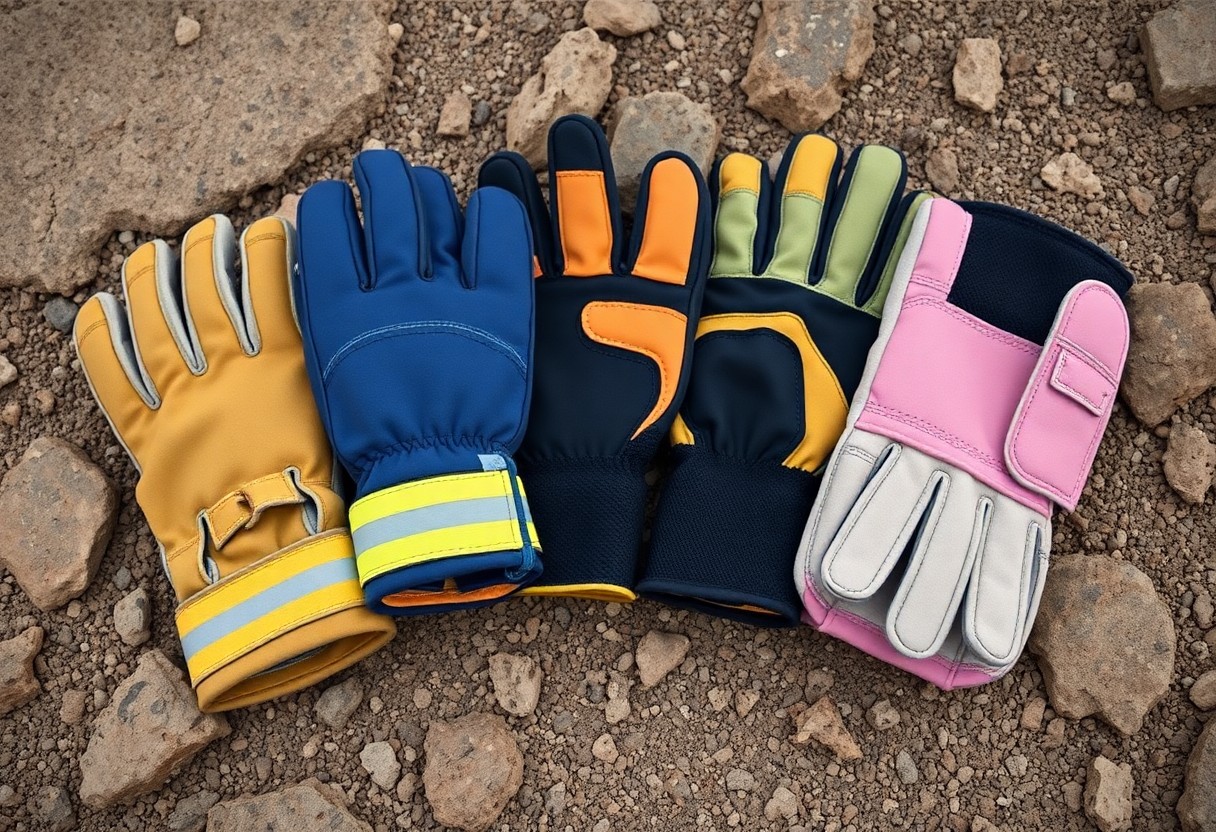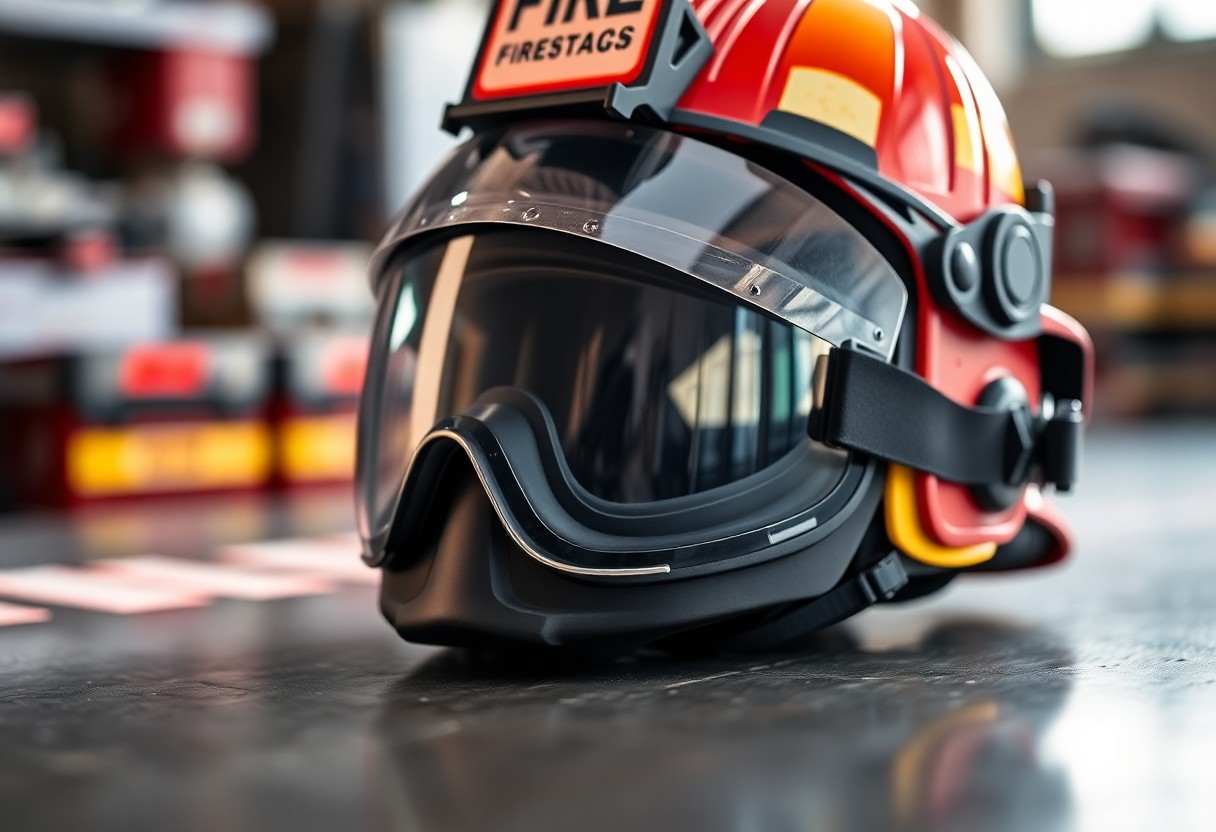PPE plays a vital role in ensuring the safety and effectiveness of your local volunteer fire department. Selecting the appropriate personal protective equipment is necessary to protect you and your fellow firefighters from hazardous conditions while executing your duties. In this guide, you will discover the key factors to consider when choosing PPE, from material durability to compliance with safety standards, ultimately helping you make informed decisions that enhance your team’s preparedness and safety on the front lines.
Understanding PPE
The right Personal Protective Equipment (PPE) is crucial for ensuring your safety and effectiveness as a volunteer firefighter. PPE serves as your first line of defense against the hazards present during firefighting operations, protecting you from heat, flames, chemicals, and various physical risks. By choosing the appropriate gear suited to your needs, you can confidently respond to emergencies while minimizing your risk of injury.
What is Personal Protective Equipment?
Even if you’re new to firefighting, you may have heard the term Personal Protective Equipment, or PPE. This encompasses gear such as helmets, gloves, protective clothing, boots, and respiratory devices designed to shield you from the myriad dangers faced on the job. Each component plays a critical role in safeguarding your well-being while ensuring you can perform effectively in emergencies.
Importance of PPE for Firefighters
Personal protective equipment is crucial for your safety as a firefighter. It helps minimize the risk of injury from exposure to flames, extreme temperatures, toxic substances, and physical hazards you may encounter during a response. The right PPE not only protects you but also enables you to focus on performing your duties effectively, knowing you are equipped to face dangerous situations.
Plus, wearing proper PPE can enhance your confidence while on the scene. When you trust that your protective gear is high-quality and appropriate for the task, you can concentrate on executing your responsibilities rather than worrying about potential hazards. This trust fosters teamwork and efficiency among your fellow firefighters, ultimately leading to safer and more successful operations within your community.
Key Factors to Consider
You must evaluate several key factors when choosing PPE for your local volunteer fire department. Consider the following:
- The specific fire scenarios your department typically encounters.
- The type of climate in your area.
- Your department’s budget limitations.
The right PPE can enhance safety and effectiveness while attending to emergencies.
Type of Fire Fighting Activities
Factors affecting your PPE choices include the specific types of firefighting activities your department engages in. Different situations, such as structure fires, wildfires, or hazardous material incidents, require distinct PPE standards and material types for optimal protection.
Local Climate and Conditions
One of the most significant aspects to think about is your local climate and conditions. The environment where your department operates can greatly affect the materials and styles of PPE you should consider.
Another important consideration is how seasonal weather patterns, such as extreme heat, cold, or humidity, may impact the performance and comfort of PPE. You want gear that offers both thermal protection during winter response and breathability during hot summer calls. Adapting your PPE to these conditions can improve not only comfort but also effectiveness in emergency situations.
Budget Constraints
Some volunteer fire departments face tight budget constraints, which can influence your PPE decisions significantly. You need to find a balance between cost and quality to ensure your team is adequately protected without overspending.
The investment in reliable PPE is non-negotiable, as it directly impacts the safety of your firefighters. However, it’s imperative to explore volume purchasing options, grants, and community support to maximize your resources while still acquiring the necessary protective gear.
Evaluating PPE Options
For selecting the right PPE for your local volunteer fire department, it’s vital to assess various options carefully. Start by identifying your department’s specific needs and preferences. Consider factors such as the type of incidents you respond to, environmental conditions, and budget constraints. This comprehensive evaluation will help you narrow down choices that offer optimal protection and functionality.
Manufacturer Reputation
Even though many manufacturers may offer PPE, it’s important to focus on those with a solid reputation in the firefighting community. Look for brands that are well-respected and have a history of supplying high-quality gear. Reliable manufacturers typically provide detailed information about their products and often have reviews or testimonials from fire departments similar to yours.
Compliance with Safety Standards
Manufacturer compliance with safety standards is vital to ensuring that your PPE meets specific performance criteria. You want PPE that adheres to the standards set by organizations such as NFPA and ANSI, which outline crucial protection levels for firefighters. This guarantees that you and your team are equipped with gear designed for maximum safety during emergencies.
Another important aspect of compliance is the continuous testing performed by manufacturers on their products. They must regularly update their gear to meet changing regulations and address emerging safety concerns. By choosing PPE compliant with current safety standards, you can feel confident that you’re providing reliable protection for your firefighters in the field.
User Reviews and Feedback
Now that you’ve looked into manufacturers and compliance, paying attention to user reviews and feedback is crucial. Hearing from fellow volunteer fire departments can offer valuable insights into the practical experiences of using certain PPE. Look for comments on durability, comfort, and overall effectiveness to help guide your decision-making process.
Plus, engaging directly with other fire departments can provide a wealth of information. You can often ask about specific features or performance in real-life situations that manufacturer marketing might not cover. Leveraging these conversations enhances your understanding and helps you select PPE that meets the needs of your team effectively.
Essential PPE Components
All volunteer fire departments require a comprehensive set of personal protective equipment (PPE) to ensure the safety of their firefighters. Each component plays a vital role in providing protection against the various hazards present during emergency situations. Understanding the crucial PPE components is key to equipping your team effectively and ensuring their readiness to face fire-related challenges.
Fire-Fighting Gear
Now, let’s discuss fire-fighting gear, which includes jackets, pants, helmets, and hoods. This gear is designed to withstand extreme temperatures, insulating you from heat and fire while ensuring durability during rugged operations. Prioritize selecting gear that fits well and meets industry standards for optimal protection.
Respiratory Protection
The significance of respiratory protection cannot be understated in fire-fighting situations. Personal protective respiratory equipment shields you from smoke, toxic gases, and particulates that can impair respiratory function and overall safety.
This protection typically involves using self-contained breathing apparatus (SCBA) or air-purifying respirators, ensuring that you can breathe clean air while operating in hazardous environments. It’s crucial to choose respiratory protection that suits your specific needs, ensuring proper fit and functionality to maintain a clear and effective airflow during emergencies.
Footwear and Gloves
Components of PPE extend to footwear and gloves, which are vital for protecting your hands and feet during firefighting operations. Appropriate footwear should offer slip resistance, puncture protection, and insulation, while gloves should provide dexterity and grip without compromising safety.
Gear that includes boots designed for firefighting often features steel toes, which shield against falling objects and provide support on uneven surfaces. Likewise, gloves should be flame-resistant, offering protection from heat while enabling agility for handling equipment. Selecting high-quality footwear and gloves ensures that you remain nimble and secure while combating fires.
Sizing and Fit
To ensure maximum protection and comfort, selecting the appropriate size and fit for your PPE is vital. Ill-fitting gear can hinder mobility and may not provide adequate coverage in emergency situations. Always refer to manufacturer sizing charts and consult with your department on standards to find the best fit for your specific role and body type.
Importance of Proper Fit
Even the highest quality PPE will not perform effectively if it does not fit properly. A poor fit can restrict movement, leading to decreased effectiveness during critical incidents. Additionally, ill-fitting PPE can cause discomfort, resulting in distractions that may compromise your safety and performance in the line of duty.
How to Measure for PPE
Assuming you’ve gathered the appropriate sizing tools, begin by taking accurate measurements of your body. Measurements should include your height, chest, waist, and inseam to ensure a fitting experience. This process aids in identifying the correct size from manufacturer sizing charts, ensuring your PPE is suitable for your needs.
For instance, measure your chest by wrapping a measuring tape around the widest part, ensuring it remains parallel to the ground. Next, for your waist, find the natural waistline, usually located above the belly button, and repeat the process. Finally, for the inseam, measure from the top of your inner thigh to your desired pant length. Gathering these measurements systematically allows you to confidently choose PPE that fits well and performs effectively. Consult with colleagues or manufacturers if you have any uncertainties during the measurement process.
Maintenance and Care
Despite the rigorous demands placed on personal protective equipment (PPE), effective maintenance and care are necessary for its longevity and performance. You should develop a routine care schedule that includes cleaning, inspections, and necessary repairs to ensure your gear remains in peak condition. This way, you can protect both your safety and that of your fellow firefighters.
Cleaning Procedures
On a regular basis, you should clean your PPE according to the manufacturer’s guidelines. Use appropriate detergents and methods to remove contaminants without damaging the materials. Pay special attention to areas that often accumulate debris, such as the boots and helmet, to maintain functionality and minimize risks.
Regular Inspections
Clearly, conducting regular inspections is vital to identifying any wear and tear on your PPE. You should inspect your gear before and after training sessions or emergency calls to ensure its integrity. Look for signs of damage, such as frayed straps or cracked helmets, and replace gear as needed to maintain safety standards.
The frequency of inspections can significantly impact the safety of your operations. Establishing a checklist can keep you organized and ensure that nothing is overlooked. Documenting each inspection will also help you track the condition of your gear over time, making it easier to identify patterns of wear or parts that may require increased attention. This proactive approach strengthens the overall safety and effectiveness of your fire department’s response efforts.
Summing up
So, when choosing the right PPE for your local volunteer fire department, focus on quality, fit, and functionality to enhance safety and efficiency. Evaluate your specific needs based on your environment and the types of emergencies you encounter. Consider features such as flame resistance, comfort, and durability. Collaborate with your team to ensure all members are equipped with compatible gear, and regularly assess and update your PPE inventory to align with industry standards. By prioritizing these factors, you can better protect your volunteers while they serve your community effectively.



